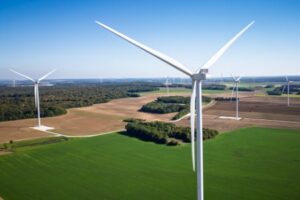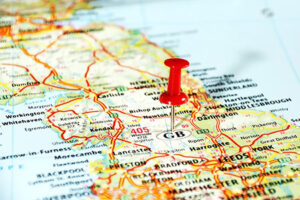What is the Environmental Impact of Hydroelectric Energy?

In the quest for clean and renewable energy, hydroelectric power stands as a formidable contender, harnessing the immense power of flowing water to generate electricity. While this form of energy production is celebrated for its low greenhouse gas emissions and reliability, it is not without environmental implications. This article delves into the environmental impact of hydroelectric power, exploring both its positive contributions and the challenges associated with the alteration of water ecosystems for energy generation. Let’s see what is the environmental impact of hydroelectric energy today.
The Positives
The Power of Flowing Water
Hydroelectric power, derived from the kinetic energy of flowing water, has been a staple in the global energy mix for decades. The basic principle involves the construction of dams or other structures to create reservoirs, with turbines converting the energy from falling water into electricity. This process has made hydroelectric power a crucial component of efforts to transition away from fossil fuels and combat climate change.
Reduced Greenhouse Gas Emissions
One of the primary environmental benefits of hydroelectric power is its low greenhouse gas emissions compared to traditional fossil fuel-based energy sources. Hydroelectric plants produce electricity without burning fossil fuels, minimizing the release of carbon dioxide (CO2) and other pollutants into the atmosphere. This reduction in emissions contributes to mitigating climate change and improving air quality.
Clean and Renewable Energy Source
Hydroelectric power is classified as a renewable energy source because it relies on the Earth’s natural water cycle. Unlike finite fossil fuels, water resources are continually replenished through precipitation, ensuring a long-term and sustainable energy supply. This characteristic positions hydroelectric power as a key player in global efforts to transition to cleaner and more sustainable energy alternatives.
Water Reservoirs and Ecosystem Alterations
While hydroelectric power offers significant environmental advantages, the creation of large water reservoirs behind dams can have profound ecological impacts. The alteration of river ecosystems due to the impoundment of water is a critical consideration in assessing the overall environmental impact of hydroelectric projects.
1. Habitat Disruption
The creation of reservoirs can lead to the submersion of large areas of land, including forests, wetlands, and agricultural areas. This submersion alters or eliminates existing habitats, affecting flora and fauna and potentially leading to the displacement of local wildlife.
2. Altered Water Temperature and Flow
Changes in water temperature and flow patterns downstream of hydroelectric facilities can impact aquatic ecosystems. Cold-water releases from the bottom of reservoirs can affect fish habitats, potentially leading to changes in the distribution of aquatic species.
3. Sedimentation and Nutrient Transport
Dams can trap sediments, preventing their downstream transport. This sedimentation alters riverbed characteristics and nutrient cycling, potentially affecting the health of downstream ecosystems and aquatic life.
4. Migration Barriers
Dams can impede the natural migration of fish and other aquatic organisms. This disruption to migratory patterns can have cascading effects on entire ecosystems, impacting the reproduction and survival of species that rely on river systems.
5. Methane Emissions
Decomposition of organic matter in reservoirs, especially in warm climates, can lead to the production of methane, a potent greenhouse gas. While the overall emissions from hydroelectric reservoirs are lower than those from fossil fuel-based power generation, the presence of methane is a consideration in assessing the net environmental impact.

Huge dam behind the hydroelectric power plant, image source: Unsplash
Balancing Environmental Considerations
Efforts to mitigate the environmental impact of hydroelectric power involve adopting strategies that balance energy production with ecosystem preservation.
1. Fish-friendly Turbines
The development and installation of fish-friendly turbines aim to minimize the impact on aquatic life by allowing safer fish passage through hydroelectric facilities. These technologies are designed to reduce fish mortality associated with turbine operations.
2. Bypass Systems
Bypass systems, such as fish ladders and fish lifts, are implemented to help migratory fish navigate around dams. These structures enable fish to reach their spawning grounds, supporting the conservation of fish populations and maintaining ecosystem health.
3. Reservoir Management
Responsible reservoir management involves considering environmental factors when determining water release schedules. This approach aims to mimic natural flow patterns, providing downstream ecosystems with conditions that support their ecological integrity.
4. Sediment Management
Implementing sediment management strategies, such as controlled releases, sediment flushing, or bypass systems, helps maintain downstream sediment transport and nutrient cycling. This can contribute to preserving the health of riverbeds and supporting aquatic habitats.
5. Adaptive Management Practices
Adopting adaptive management practices involves continuously monitoring and reassessing the environmental impact of hydroelectric projects. This approach allows for the implementation of adjustments based on new information, ensuring a responsive and responsible approach to ecosystem management.
Exploring Small-Scale and Run-of-River Solutions
To address some of the environmental concerns associated with large dams and reservoirs, there has been a growing interest in small-scale and run-of-river hydroelectric projects. Unlike traditional dam-based systems, these projects aim to minimize ecosystem disruption by maintaining natural river flow and avoiding the creation of extensive reservoirs.
1. Small-Scale Hydroelectric Power
Small-scale hydroelectric projects typically involve lower-capacity facilities that can be integrated into existing river structures. By focusing on smaller installations, these projects aim to reduce the environmental footprint and preserve river ecosystems.
2. Run-of-River Hydroelectric Power
Run-of-river hydroelectric power systems operate without significant storage reservoirs. Instead, they utilize the natural flow of rivers to generate electricity. This approach minimizes habitat disruption, sedimentation, and alterations to water temperature compared to large reservoir-based projects.
3. Environmental Certification and Standards
Establishing and adhering to environmental certification and standards for hydroelectric projects can provide a framework for responsible development. Certifications like the Hydropower Sustainability Assessment Protocol (HSAP) offer guidelines for assessing and managing the environmental and social impacts of hydroelectric power.
Innovations in Fish Migration
Recognizing the importance of maintaining aquatic biodiversity, ongoing research and technological innovations are focused on improving fish migration around hydroelectric facilities.
1. Fish-friendly Turbines
Advanced turbine designs, such as fish-friendly Kaplan and Archimedes screw turbines, aim to reduce the impact on fish mortality during energy generation. These turbines offer safer passage options for fish, contributing to the conservation of aquatic ecosystems.
2. Fish Ladders and Lifts
Continued advancements in fish ladders and lifts enhance their effectiveness in assisting fish in bypassing dams. These structures play a crucial role in supporting migratory fish populations, allowing them to navigate past hydroelectric facilities and reach their spawning grounds.

Glen Canyon Dam in Arizona, image source: Unsplash
Community Engagement and Adaptive Management
Ensuring the success of hydroelectric projects requires active collaboration with local communities and the implementation of adaptive management practices.
1. Community Engagement
Involving local communities in the decision-making process, from project planning to implementation, fosters a sense of ownership and ensures that their concerns are considered. Community engagement contributes to the development of solutions that align with both energy needs and environmental sustainability.
2. Adaptive Management
Adaptive management involves an iterative process of monitoring, assessment, and adjustment based on new information. By adopting this approach, hydroelectric projects can respond to changing environmental conditions and implement measures to minimize their impact on ecosystems.
Conclusion: Sustainable Hydroelectric Future
Hydroelectric power represents a crucial component of the global transition to cleaner and more sustainable energy sources. While its environmental impact involves alterations to river ecosystems, ongoing advancements in technology and adaptive management practices offer the potential to minimize negative effects.
As the world seeks to balance the growing demand for energy with environmental conservation, responsible hydroelectric development and a commitment to mitigating ecological disruptions pave the way for a sustainable future. By fostering a holistic approach that considers both energy needs and environmental preservation, we can navigate the waters of hydroelectric power toward a more harmonious coexistence with the environment on our planet.







